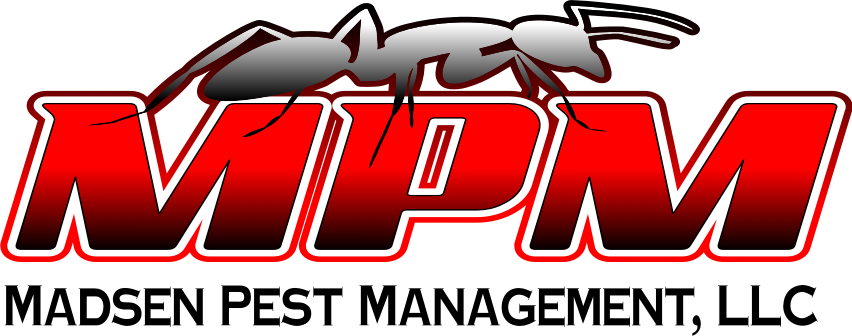The sun is shining, the trees are budding, the temperature’s rising; everything is coming back to life after that long and seemingly endless winter. Along with the arrival of spring comes the reemergence of springtime pests. YUCK!
Every year we look forward to the melting snow and springtime growth, but frequently forgotten, along with those beautiful days come some less-than-lovely creatures. Mosquito bites, crawling ticks, unwanted wasps nests, endless battles with ants, and bursting spider nests are all part of that inevitable spring thaw. Here’s what you need to know about these dreaded springtime pests and how to manage them.
PESTS TO LOOK OUT FOR IN THE SPRING:

Mosquitos – April and May showers bring the ideal breeding conditions for mosquitos. Starting in spring and lasting until late October, mosquito season is lengthy. If you have brush piles, plant life or standing water in your backyard, you’ve got a mosquito playground. Mosquitos are more than just annoying, buzzing insects, their bites leave itchy red sores, and they carry more diseases than any other insect in the world.

Ticks – When ground temperatures are consistently above 45 degrees Fahrenheit, ticks make their big debut. Tick season typically starts in the spring and lasts well into the fall months. They commonly hide in shrubbery, tall grass, and wooded areas, but unfortunately, also anywhere else outside. People and animals are prone to picking up ticks while out in nature so make sure you are checking for them often. Tick bites can lead to serious diseases, like Lyme Disease.

Stinging Insects – When the warm weather hits, wasps and bees wake up ready to go. Spring is when flying insects venture out looking for new locations to build their nests and establish their colonies for the summer. It’s important to act quickly when you notice a nest around your property to prevent the formation of a colony. It’s best to call in the pros when you find these insects lingering around; when threatened they will sting.. In some cases, hives need to be relocated, not eliminated, since bees are essential to the surrounding environment.

Ants – Where there is one, there are thousands. Ants are small insects that can cause BIG problems. This is another case where you might need to bring in some backup. Unless you find the colony and source of your ant problem, they are unlikely to go away. Certain species of ants, like carpenter ants, will cause serious structural damage to your home. Carpenter ants can enter your home through the foundation, cracks, vents and pipes.

Spiders – Spring is a spider’s favorite time of year. Female spiders that hide all winter stretch their eight legs in spring to venture out in hopes of securing a spot to lay their eggs. These creepy crawlers are commonly found in basements, garages, porches and other dark areas. Spiders sneak into your home through cracks or poorly sealed doors or windows. While most bites from spiders are just irritating, some spider species have dangerous bites that are especially harmful to children.
HOW TO MANAGE PESTS IN THE SPRING
Don’t let these pests prevent you from enjoying your spring. Here are some tips for preventing these springtime pests, before they become a problem:
- Clear your yard of debris. Rake leaves and dispose of leaf piles properly. Trim the bushes and hedges. Remove weeds and other plant life that has accumulated over winter.
- Remove any woodpiles. Make sure your woodpiles are not stacked against the side of your home or any other buildings on your property.
- Seal all cracks and openings. Winter weather can cause cracks and gaps to form around your home’s exterior. Check your house for any areas that are not properly sealed like your home’s foundation, window panes, screens and doors.
- Clean the gutters. Clear all of the built-up leaves and debris from your home’s gutters. Clogged gutters can lead to standing water, which in turn, turns into pest pools.
- Remove standing water. While it’s not possible to dry out every puddle after it rains, it’s important to remove any standing water that you can around your yard. Dump out kiddy pools and other children’s toys that may collect water. Tip-over empty planters, containers or buckets, and make sure your yard has a functioning drainage system.
- Clean indoors. Time for spring cleaning! Make sure to vacuum regularly, wipe up spills and crumbs and store your foods in airtight containers.
These tips are helpful for avoiding unwanted pests from your property, but if you’ve taken all precautions and still have a pest problem, the best tip is to call a professional. Effective and efficient pest control is what Madsen Pest does best! If you suspect a springtime pest is invading your home, give us a call at (715) 791-4777. Our expert technicians are productive and thorough, allowing you to get back to enjoying your spring!
Related Posts
ANTS IN YOUR PLANTS
You’ve lovingly tended to your garden, carefully selecting the perfect plants and diligently watering and nurturing them. However, one day, as you admire your blooming flowers and flourishing vegetables, you notice a line of tiny intruders passing through your garden bed. You’ve got ants in your plants! Do these industrious little creatures pose a threat…
KEEPING SPIDERS & WASPS AT BAY!
TIPS TO PREVENT WEBS & NESTS AROUND YOUR HOME OR BUSINESS Spiders, wasps and nests — oh my! These creepy crawlers and buzzing troublemakers always come in at the top of our most common and most unwanted pests list. But fear not because we’ve got the inside scoop on keeping those eight-legged web weavers and…
TICK TALK: HOW TO STAY TICK-FREE THIS SUMMER
Ticks, ticks, they’re everywhere! Ticks are the uninvited guests of the warmer months, and they always seem to outstay their welcome. With their tiny size and ability to transmit diseases, ticks are more than a creepy pest – they’re downright dangerous. Unfortunately, this year is gearing up to be an extra heavy tick season, making…



